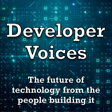
DataFusion - The Database Building Toolkit (with Andrew Lamb)
Building a database is a serious undertaking. There are just so many parts that you have to implement before you even get to a decent prototype, and so many hours of work before you could begin working on the ideas that would make your database unique. Apache DataFusion is a project that hopes to change all that, but building an extensible, composable toolkit of database pieces, which could let you build a viable database extremely quickly, and then innovate from that starting point. And even if you’re not building a database, it’s a fascinating project to explain how databases are built.
Joining me to explain it all is Andrew Lamb, one of DataFusion’s core contributors, and he’s going to take us through the whole stack, how it’s built and how you could use it. Along the way we cover everything from who’s building interesting new databases and how you manage a large, open-source Rust project.
–
DataFusion Homepage: https://datafusion.apache.org/
DataFusion on Github: https://github.com/apache/datafusion
DataFusion Architecture (with diagrams!): https://youtu.be/NVKujPxwSBA?si=tw9ACxlbdpBuVsnv&t=1045
Datalog: https://docs.racket-lang.org/datalog/
Tokio: https://tokio.rs/
Andrew’s Homepage: http://andrew.nerdnetworks.org/
Andrew’s Blog Post about Tokio: https://thenewstack.io/using-rustlangs-async-tokio-runtime-for-cpu-bound-tasks/
Velox: https://velox-lib.io/
Arroyo: https://www.arroyo.dev/
Synnada: https://www.synnada.ai/
LanceDB: https://lancedb.com/
SDF+DBT: https://docs.sdf.com/integrations/dbt/integrating
Support Developer Voices on Patreon: https://patreon.com/DeveloperVoices
Support Developer Voices on YouTube: https://www.youtube.com/@developervoices/join
Kris on Bluesky: https://bsky.app/profile/krisajenkins.bsky.social
Kris on Mastodon: http://mastodon.social/@krisajenkins
Kris on LinkedIn: https://www.linkedin.com/in/krisjenkins/
